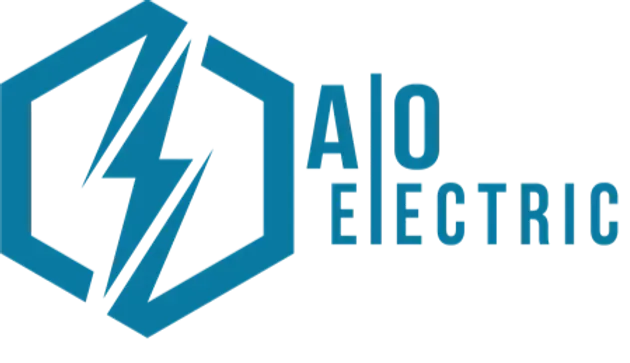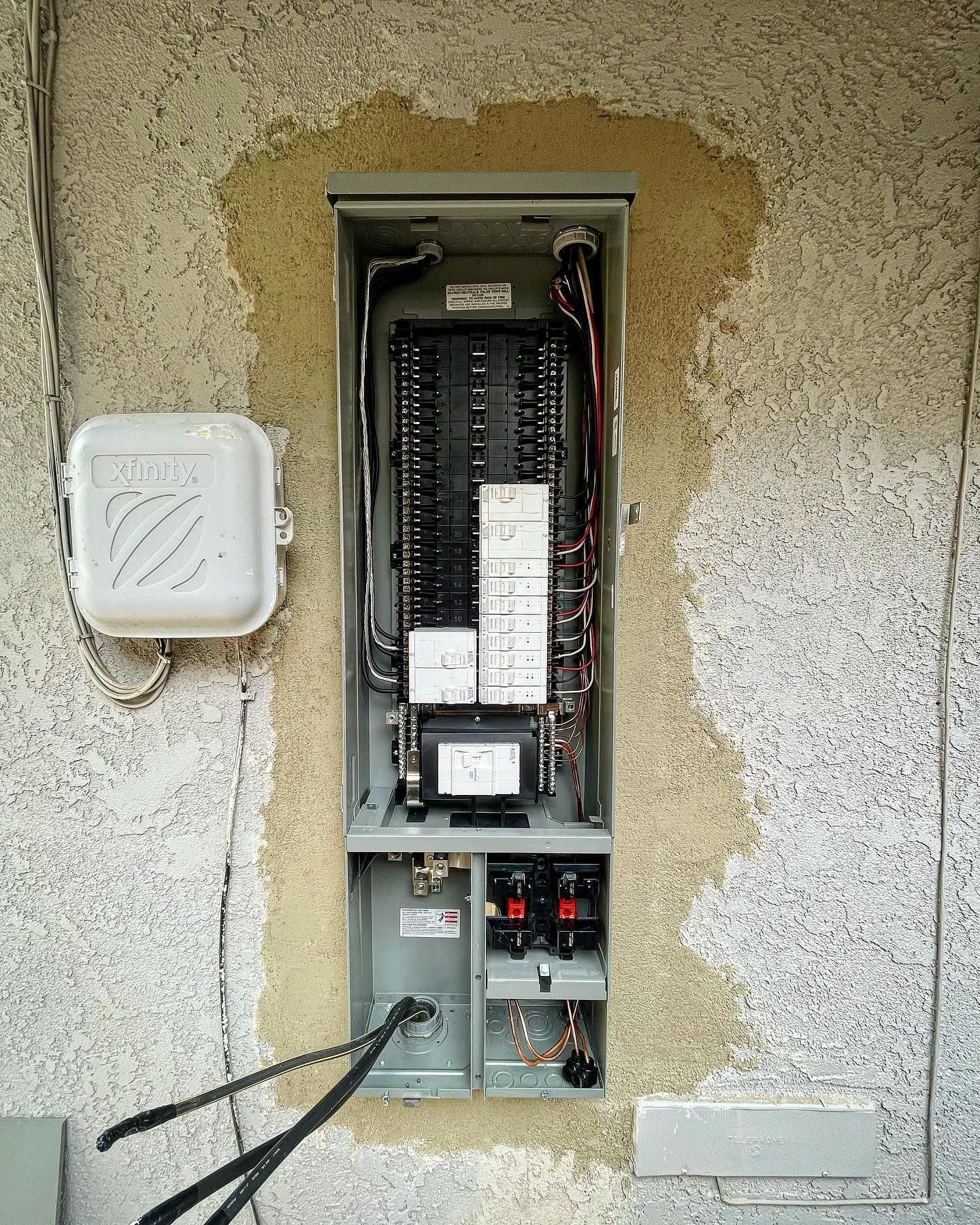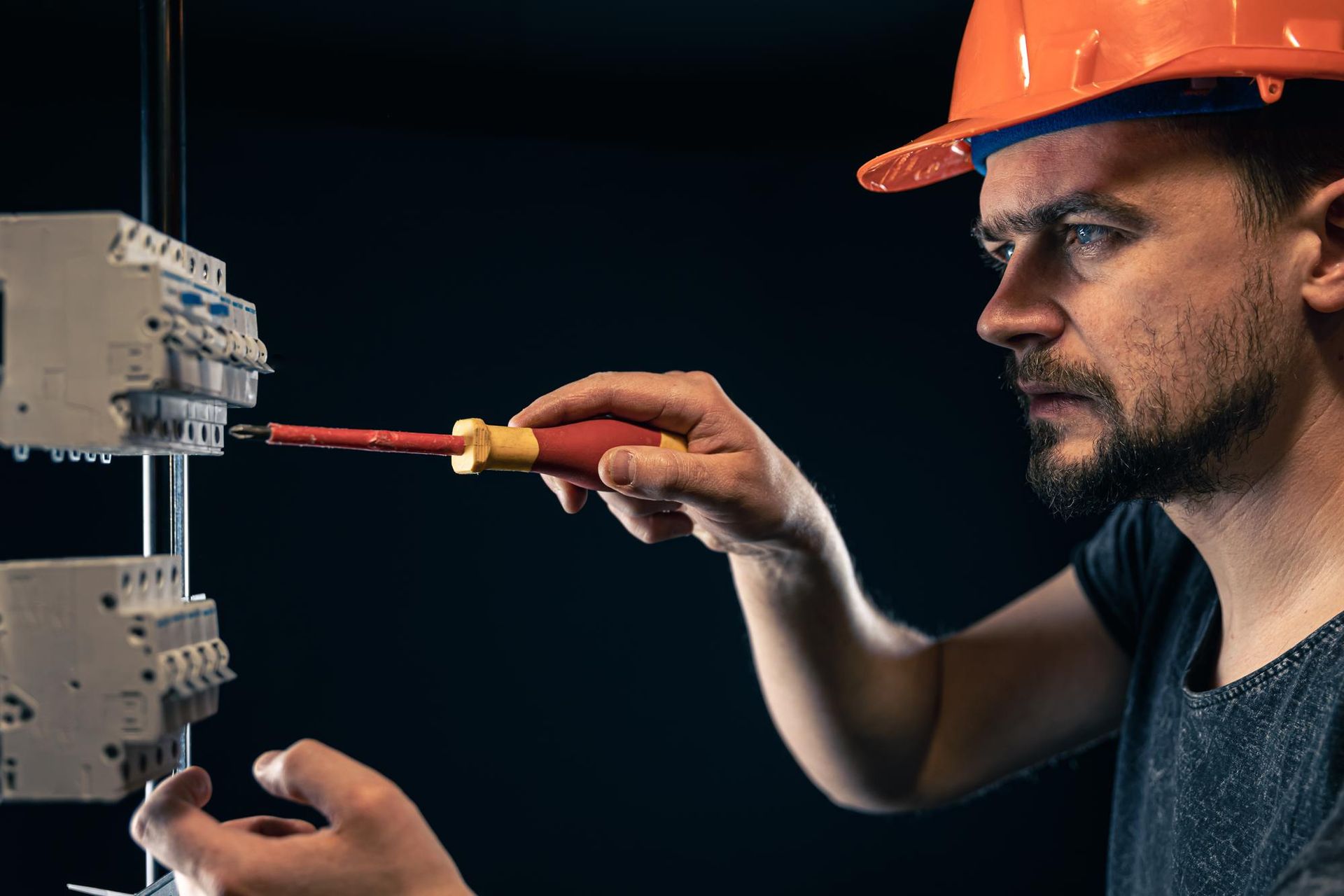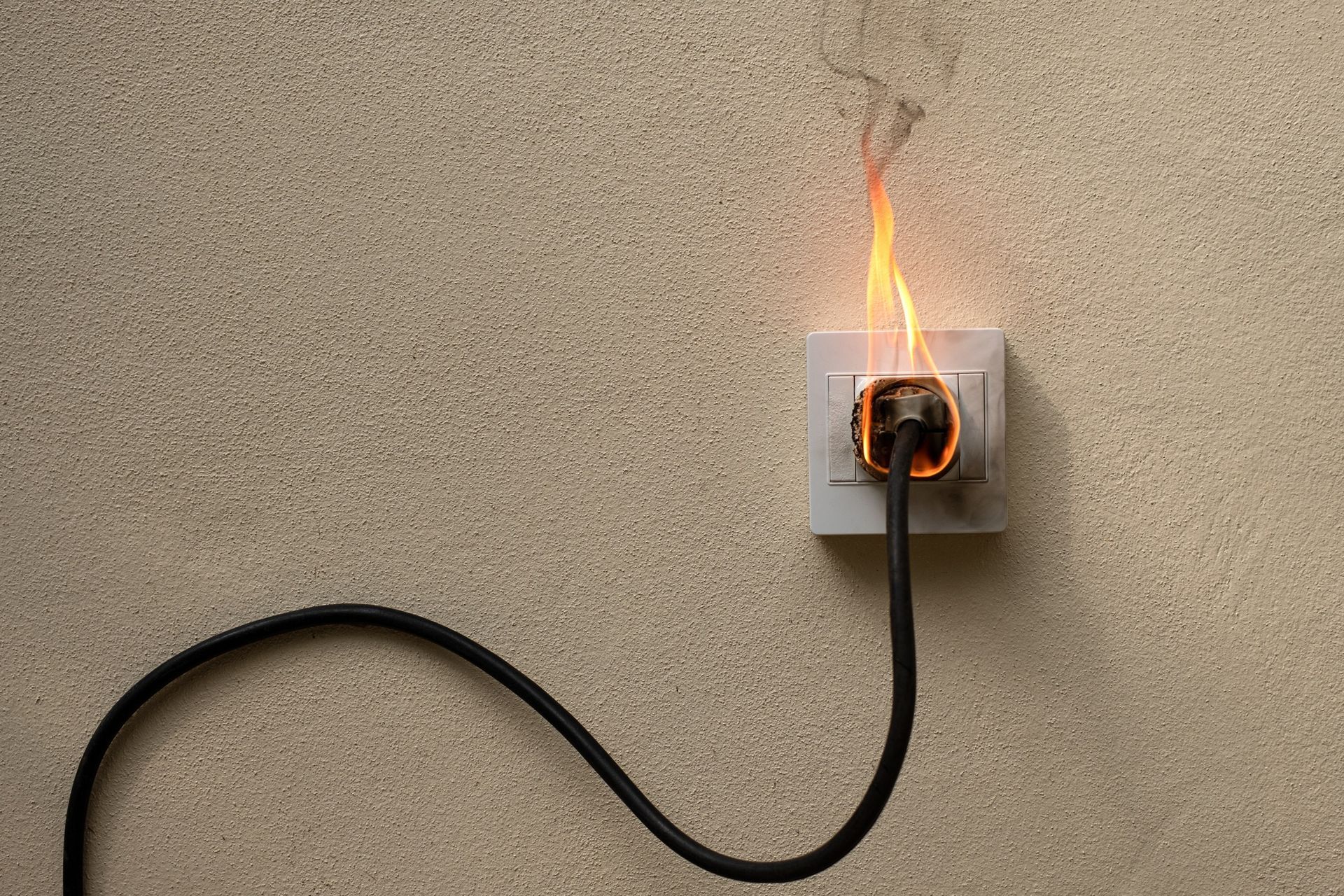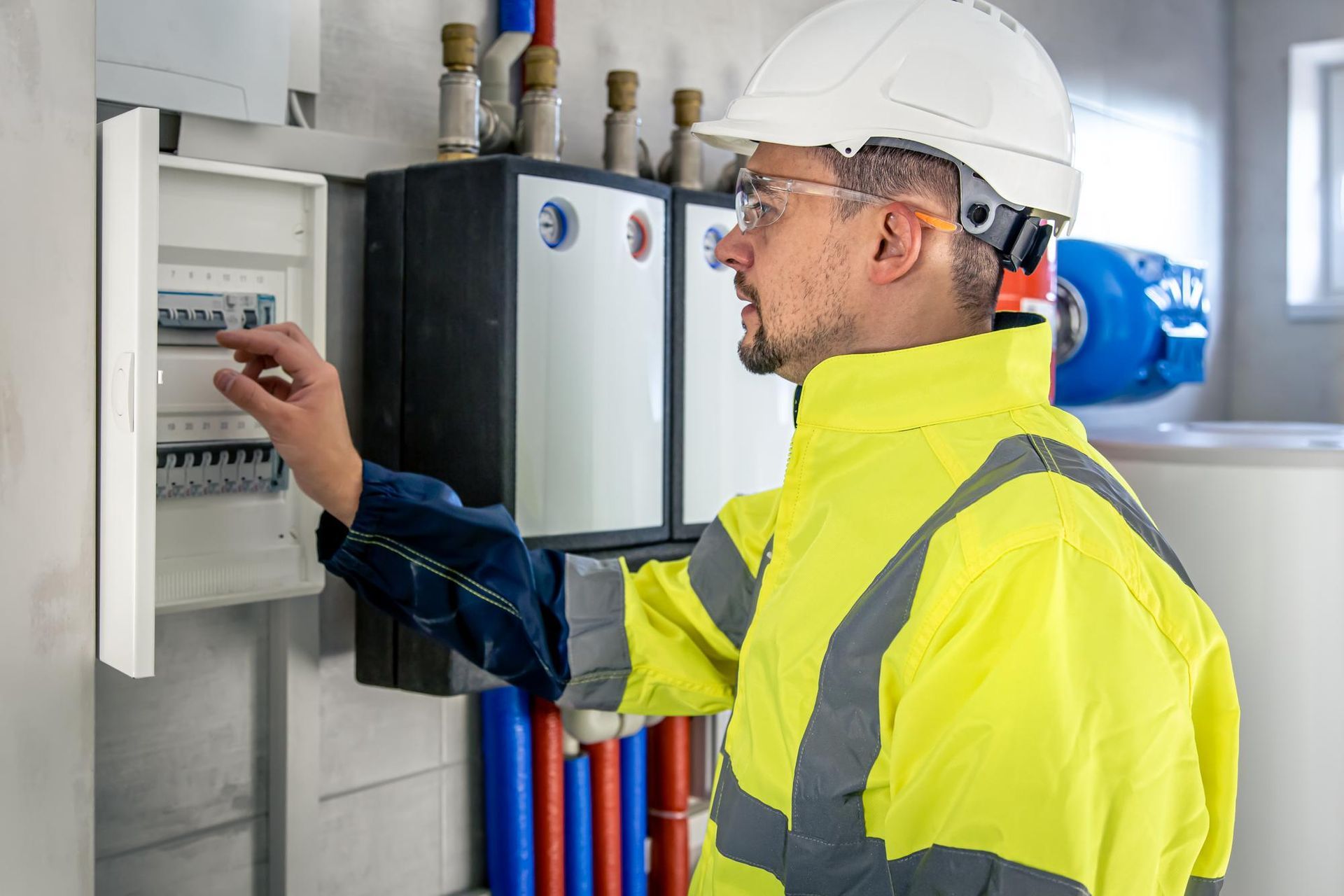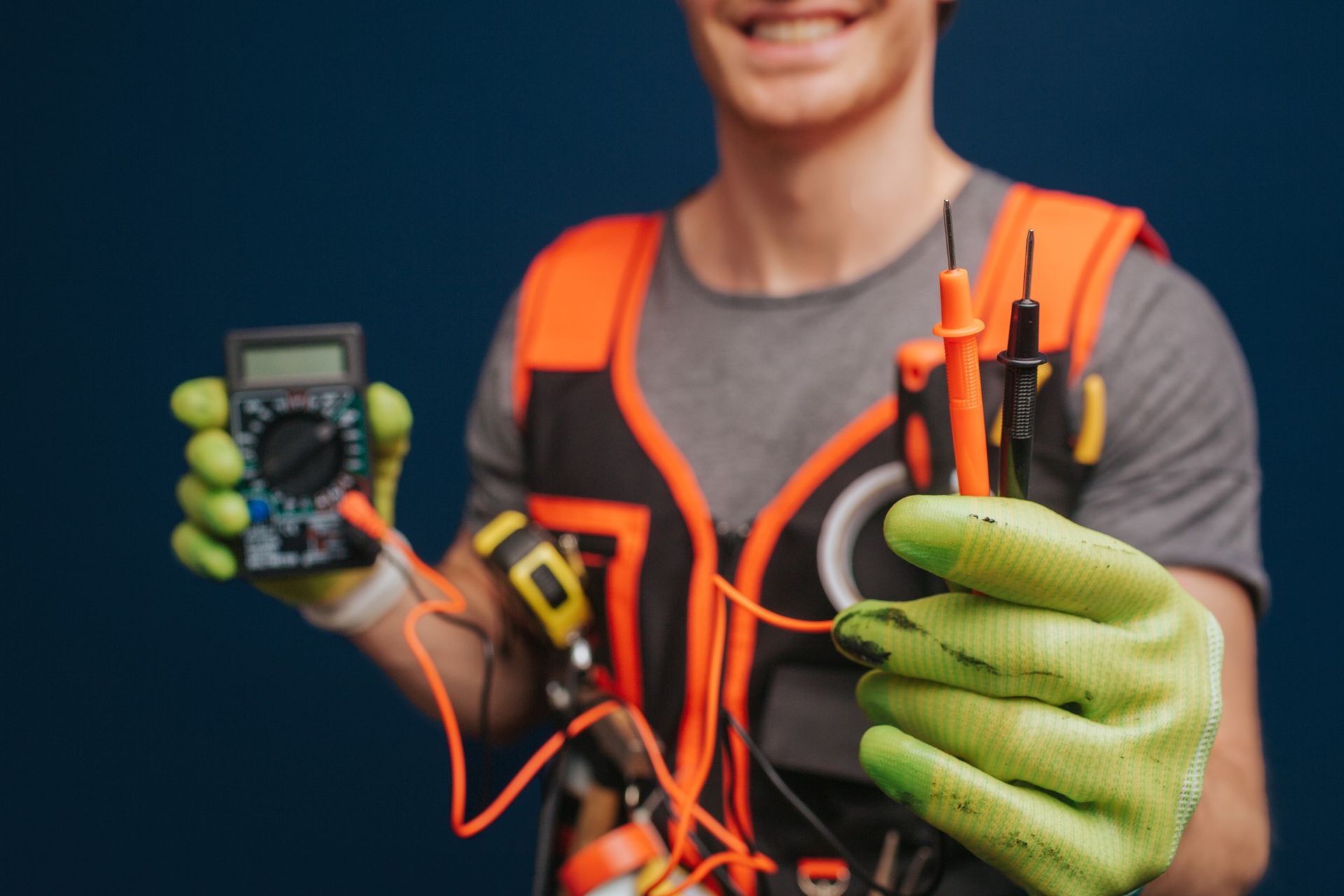Sacramento, CA
How to Build Electrical Panel: Tips for Ensuring Compliance & Safety
Have you ever wondered how the magic of electricity is harnessed within the walls of your home? That's where an electrical panel comes into play, and knowing how to build an electrical panel is not just a matter of skill—it's an art that balances safety with sophistication. If you're looking to take on this challenge, you're in the right place. This guide will walk you through the nuances of assembling an electrical panel that not only meets your power needs but also ensures that you're up to code and out of harm's way.
The heart of any
home's electrical system is its panel, and constructing one is a task that demands respect. Whether you're a DIY enthusiast or a seasoned professional, this guide will provide you with invaluable tips on building an electrical panel that is both compliant with regulations and safe for everyday use. Let's electrify your knowledge and safely switch on the power to your latest project.
Before we dive into the details of construction, let's get a clear picture of what an electrical panel is. Think of it as the quarterback of your home's electrical system, where all the play-calling happens. This panel directs electricity from the utility company into different circuits that feed power throughout your abode. It's essential to understand the different types of panels—main breaker panels, sub-panels, and transfer switches—to determine which suits your project.
- Main Breaker Panels: These are the most common types of panels and serve as the main point of distribution and control for the electrical circuits in your home.
- Sub-Panels: Acting as an extension of your main panel, sub-panels help manage electrical distribution to specific areas or high-demand appliances without overcrowding the main panel.
- Transfer Switches: Although not a panel per se, transfer switches are crucial in homes with backup generators, allowing a safe switch between utility and generator power.
Each panel consists of various components, and it's crucial to know them:
- Circuit Breakers: These are the most visible parts of your panel, serving as the guardians that shut off power if they detect a fault or overload.
- Bus Bars: These metallic strips conduct electricity from the main breaker to the individual circuit breakers.
- Neutral and Ground Bars: These bars are essential for the safe operation of your electrical system, providing a path for current to return to the ground in case of an interruption.
Now that you've got a grasp on the types of panels and their components, let's touch upon how they function together. When the electricity enters your home, it's high voltage and not yet ready for safe consumption. The main breaker in your electrical panel will regulate this voltage, distributing it across different circuits. Each circuit is then protected by a circuit breaker, which trips, or breaks the circuit, if there's an overload or a short circuit, preventing fires and other hazards.
But what makes an electrical panel 'tick'? It's not just the flow of electricity, but also the careful calibration of each component to work in harmony. The correct arrangement of circuit breakers, the secure attachment of bus bars, and the proper grounding—all of these are crucial for a well-functioning
electrical panel.
With safety as our number one priority, let's venture into the planning stage, where safety and compliance start to take shape.
Section 2: Pre-Planning for Safety and Compliance
Before a single tool is picked up or a wire is connected, successful construction of an electrical panel begins with thorough planning. This stage is critical because proper planning can prevent costly mistakes and ensure your panel is both safe and up to code.
When you build your electrical panel, think about the future. Will you be adding a home theater? Perhaps a workshop in the garage? Plan for enough circuits and space in your panel to accommodate these dreams. Moreover, ensure that there's ample space around the panel for future maintenance or modifications.
As you conclude your planning, double-check everything. Remember, a well-planned project paves the way for a successful build. And with the planning complete, you're now ready to move on to gathering your tools and materials—the nuts and bolts of how to build an electrical panel.
Understanding Local Codes and Regulations:
The first step is to familiarize yourself with local electrical codes and regulations. These rules can vary significantly depending on where you live, and they are in place to ensure that every electrical panel built is safe and effective. A good place to start is by contacting your local building department or checking the National Electrical Code (NEC), which sets the benchmark for safe electrical design, installation, and inspection.
Obtaining Necessary Permits:
Many regions require a permit before you begin electrical work. This might seem like an extra step, but it's a safeguard that brings an additional layer of review to your project. When you apply for a permit, a building inspector will eventually check your work to ensure it's up to snuff. It's not just bureaucracy; it's about ensuring safety and avoiding potential hazards.
Deciding on the Panel Location:
Choosing the right location for your electrical panel is more than just convenience; it's about compliance and functionality. Your panel should be readily accessible, have enough clearance for operation, and be placed in a location that's dry and sheltered. Also, consider the potential for future expansion. As your power needs grow, so might the need for additional circuits.
Section 3: Gathering Your Toolkit and Supplies
Equipping yourself with the proper tools and materials is the prelude to the hands-on endeavor of building an electrical panel. The arsenal you need includes a variety of screwdrivers, wire strippers, a multimeter for safety tests, pliers of several types, a torque wrench to secure connections, a level to align the panel perfectly, and ample lighting to illuminate your workspace. Alongside these tools, your shopping list must comprise the panel board itself, compatible circuit breakers, labels for organization, conduits with fittings for wire protection, wire nuts, and terminal blocks for making connections.
And do not forget your armor; insulated gloves, safety goggles, ear protection, and non-conductive footwear are your guardians against the occupational hazards of electrical work.
Section 4: Assembling Your Electrical Panel
When it comes to constructing your electrical panel, precision and caution are your best friends. Begin by securing the panel board to the wall, making sure it's fixed firmly and vertically aligned. Next, you'll embark on one of the most crucial steps—establishing a reliable ground. This involves connecting a grounding wire to the grounding bar within the panel, which in turn, must have an unbreakable link to the earth outside.
The act of arranging and fastening the circuit breakers onto the bus bars comes next. It’s akin to setting the foundations of a building—you must evenly balance the electrical load to avoid future complications. As you introduce each circuit into the panel, it's imperative to label it accurately. The labeling is not just a task—it's your roadmap for any future troubleshooting or expansion.
Should you find the process overwhelming, do not hesitate to seek out a professional. It's better to invest in expertise than to compromise on safety.
Section 5: Aligning with Standards and Regulations
Building an electrical panel is akin to composing music; every note must harmonize with the laws of safety and standards. Begin by immersing yourself in the National Electrical Code or your local electrical guidelines to understand the intricate requirements for a compliant panel installation.
It’s your responsibility to ensure every aspect of the panel from wire type to routing reflects strict adherence to these regulations. Remember, the final act is an inspection. It’s not merely an evaluation but a testament to your commitment to safety and quality. Treat it with the seriousness it deserves by revisiting every connection and conforming to every code.
Section 6: Prioritizing Safety Above All
Navigating the electrical landscape demands vigilance. Initiate this journey by ensuring the main power supply is inactive. There’s a saying, "trust, but verify"—embrace this by testing wires with a multimeter before making contact. Continual vigilance is vital even after the panel is operational. Regular inspections for signs of damage or wear are critical practices that uphold safety and functionality.
Remember, the path of electricity should always be respectful of its potential. With this mindset, the process of building your electrical panel becomes not just an act of construction but a commitment to upholding the well-being of all who rely on its service.
Section 7: Testing and Troubleshooting Your Electrical Panel
Once you've assembled your electrical panel, it's not yet time to relax—the next critical phase is testing. This step verifies the integrity of your work and ensures the system operates as intended. You'll want to methodically test each circuit using your multimeter to ensure they are not only live but also receiving the correct voltage. Any anomalies in the readings could indicate potential issues such as loose connections or incorrect wiring, which you must address promptly.
Troubleshooting is a systematic process. If a problem arises, you start at one end and work your way to the other. This means checking each connection, ensuring all wires are seated correctly in their terminals, and verifying that all breakers are functioning properly. This can be time-consuming but is essential for both safety and functionality.
Section 8: Final Touches and Ongoing Maintenance
After ensuring everything is in tip-top shape and compliant with regulations, it's time for the final touches. This involves fitting the panel cover, ensuring all labeling is clear and accurate, and double-checking that there are no loose tools or materials left inside the panel. It's like tidying up after a great work of art—you stand back and appreciate the safety, orderliness, and functionality of your craftsmanship.
Maintenance, like testing, is an ongoing responsibility. Periodically check your electrical panel for signs of wear and tear. Look out for corrosion, inspect wire insulation for damage, and listen for unusual sounds like buzzing or crackling that could indicate electrical issues. A well-maintained panel is a long-lasting one, reducing the risk of problems down the line.
Conclusion: Empowerment Through Knowledge and Safety
The journey of learning how to build an electrical panel is fraught with details, specifications, and safety procedures. But it's also a journey that empowers us with knowledge and skills that go beyond the panel itself. At AO Electric Inc., we understand that while this guide has equipped you with the basics, there's nothing quite like professional expertise when it comes to your electrical needs.
Building an electrical panel is more than connecting wires and securing breakers; it's about instilling a system that stands as the heart of a building's electrical framework. The process demands respect for the power it harnesses and a commitment to the safety of all who will depend on it. This is the ethos we at
AO Electric Inc. bring to each project in Sacramento, CA.
As you step back from the completed panel, take pride in the work you've done. Remember that this is not the end but the beginning of a well-maintained, safe, and reliable power distribution system. With the right tools, a careful plan, a meticulous approach, and a focus on safety, you've shown that it's not just about how to build an electrical panel, but how to build it right.
Whether you're a DIY enthusiast or a seasoned pro, the knowledge you've gained here will serve you not just in this project but in many more to come. And when the project is beyond your comfort zone, or you simply want to ensure the highest standards of safety and compliance, we are here to help. Our team of experts at AO Electric Inc. brings years of experience to ensure that your electrical systems are built to the highest standards.
Keep learning, keep building, and above all, keep prioritizing safety with every wire you twist and every circuit you energize. And if you ever need assistance or professional service, don't hesitate to reach out to us at AO Electric Inc. You can contact us at
(916) 531-6398. Together, let's energize the future safely and reliably.

